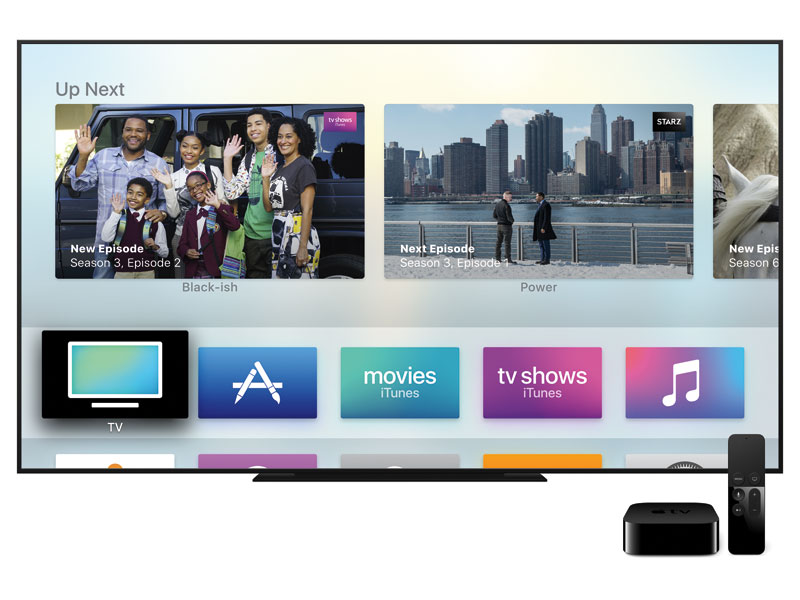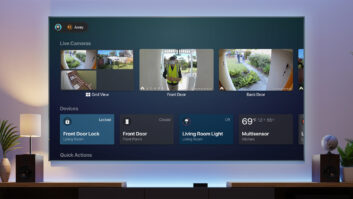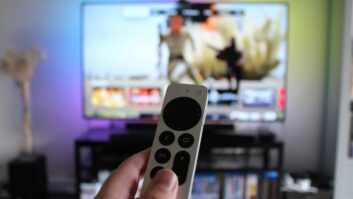
The current version of Apple TV was introduced just over a year ago, but given the lightning pace of progress in streaming devices, it has already fallen behind the competition. As part of its effort to address this, yesterday’s Apple event saw the debut of a new solution in the “TV Everywhere” mission.
Until it gets in the hands of reviewers and consumers, however, the solution is bringing more questions than answers.
In the last few weeks, Roku has totally refreshed its product line, including three new 4K models and two with HDR. Similarly, Google is shipping the new Chromecast Ultra by mid-November with 4K, HDR-10 and Dolby Vision capability. With an Apple introduction event held yesterday, the time seemed right for a new Apple TV — and there is a new one, but it’s an app, not a hardware product.
The current Apple TV device remains as is, but when a new tvOS update arrives in December there will be a new app called, well, “TV,” that may very well be a preview of what the long-rumored full-on Apple TV set might have had as its interface.
With the TV app, there will be access to both Apple TV apps and the ability to pull apps over from iOS. Combined with access to content purchased from iTunes, it will allow search and select across all video the user has, or is subscribed to. A single, unified sign-in means you only need to log in once to have instant access to such “TV Everywhere” apps as ESPN, as well as other cable or satellite channels where subscription and authorization is required. The unified TV experience also extends to stand-alone subscription-based services, including Hulu, CBS, Starz, HBO and many others.
Twitter is also key part of the TV app, as it will provide increased live streaming of sports such as NFL and NBA, as well as election coverage in cooperation with BuzzFeed. The main program will show on the left side of the screen, while the interactive Twitter feed scrolls down on the right.

Siri-based voice speech adds another dimension to TV, thanks to deeper ability to search, find, select and play content across all apps, as well as A Pick Up Where You Left Off feature. Sports content can be voice searched by game or team, and Siri will select the broadcast if it is within the available services. There is also a What Other Games Are On listing, complete with the current scores.
Although Apple TV is the key hardware focus for the TV app, it will also be available for iPhones and iPads along with all that runs underneath it.
As is the case for any product, particularly in the world of OTT content, there are some things that are yet to be answered and others that may create a stopping point for some. Most notably, content from Netflix, Vudu, Amazon, Google Play and Fandango (formerly M-Go) will not be available through the TV app. It remains to be seen if, and how, the individual apps will function if pulled in via iOS apps, or if the absence of a tvOS app becomes problematic. Lack of access to those services could be a showstopper for some.
Also yet to be seen are how search and selection will be handled, if at all, for apps not native to the TV app. Not all iOS apps are available for the current Apple TV. For example, if there is no native TV app for a sports conference such as Pac-12, how will it play a UCLA vs. Washington State game even if it knows it’s available? Non-ESPN games did not appear to be available to watch in the demo of What Games Are On.
Similarly, the TV app is clearly OTT focused, but what provisions will it have for live broadcast content? For example, what will happen if the search is “What’s on Channel 4?” or “Play the local news.” Even if services such as Sling and PlayStation Vue are available, how deep will their captive program guides go? Or, for those using an over-the-air device such as Tablo, will TV communicate with that app? Even outside of local TV, how will TV let the viewer watch CNN, Fox News, MSNBC or CNBC, whose apps do not carry a live stream but only edited segments?
Finally, with cable companies such as Comcast and Charter’s Spectrum moving toward IP integration in lieu of conventional set tops, how will TV deal with them and access program information? As an example, I often use the TWC/Spectrum app on Roku or iOS devices to watch “cable.” Granted, switching channels isn’t as quick and easy as it is with the numeric keypad on a set top, but it works. Right now, Apple TV doesn’t include live, linear cable content.
Perhaps we are being too picky, and it needs to be stated that some of the details are still a bit unclear and issues surfaced here may be worked out by launch. Particularly for an OTT-centric viewer, a binge watcher or a sports fan whose favorite teams’ games are available on a TV-compatible app, the TV app may be exactly what the viewer wants. The integration and search is seamless, as far as the available underlying apps allow. However, if 4K/UHD, HDR or heavy use of live broadcast content is the goal, you may not agree with Apple’s statement that “Now there is really no reason to watch TV anywhere else.”
That doesn’t mean that TV and the Apple TV don’t fit a need. We’ll keep our Apple TV and likely use TV, but it will be there in parallel with a Roku, Chomecast, TiVo and a Tablo. At this stage of the game, none of these products and associated software is perfect. All, including TV, do much that is right and perhaps all that some need.
At this point, however, none of them do everything. Whatever does that will have a home run.












